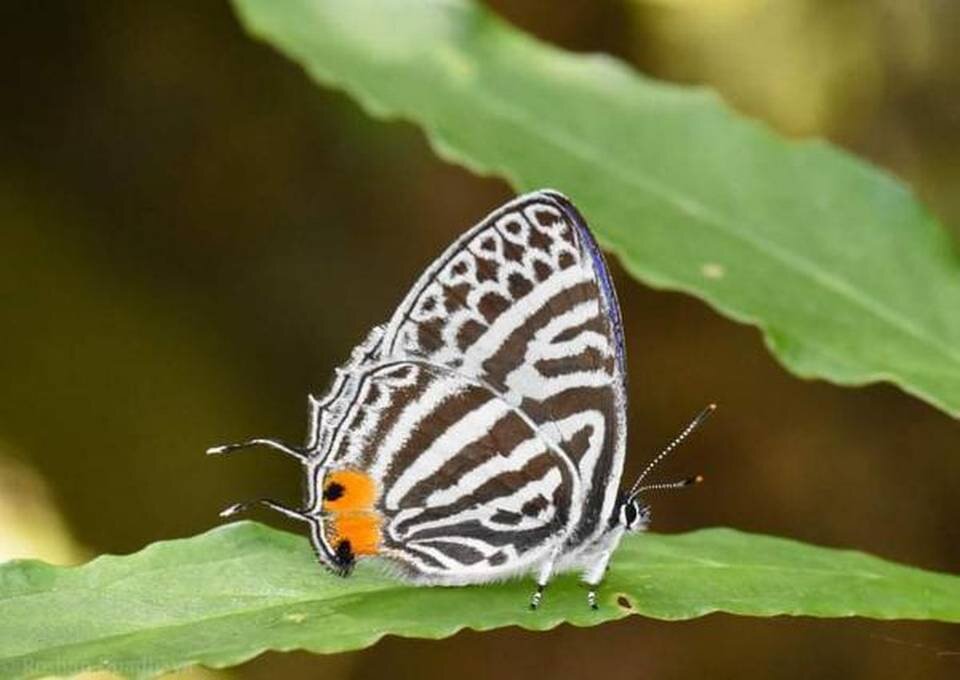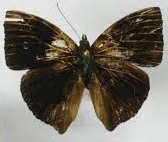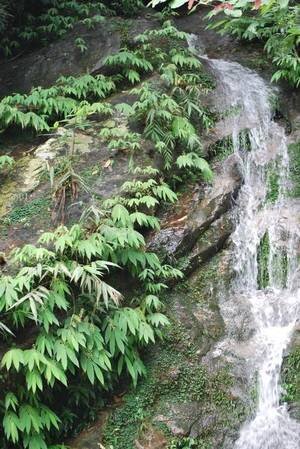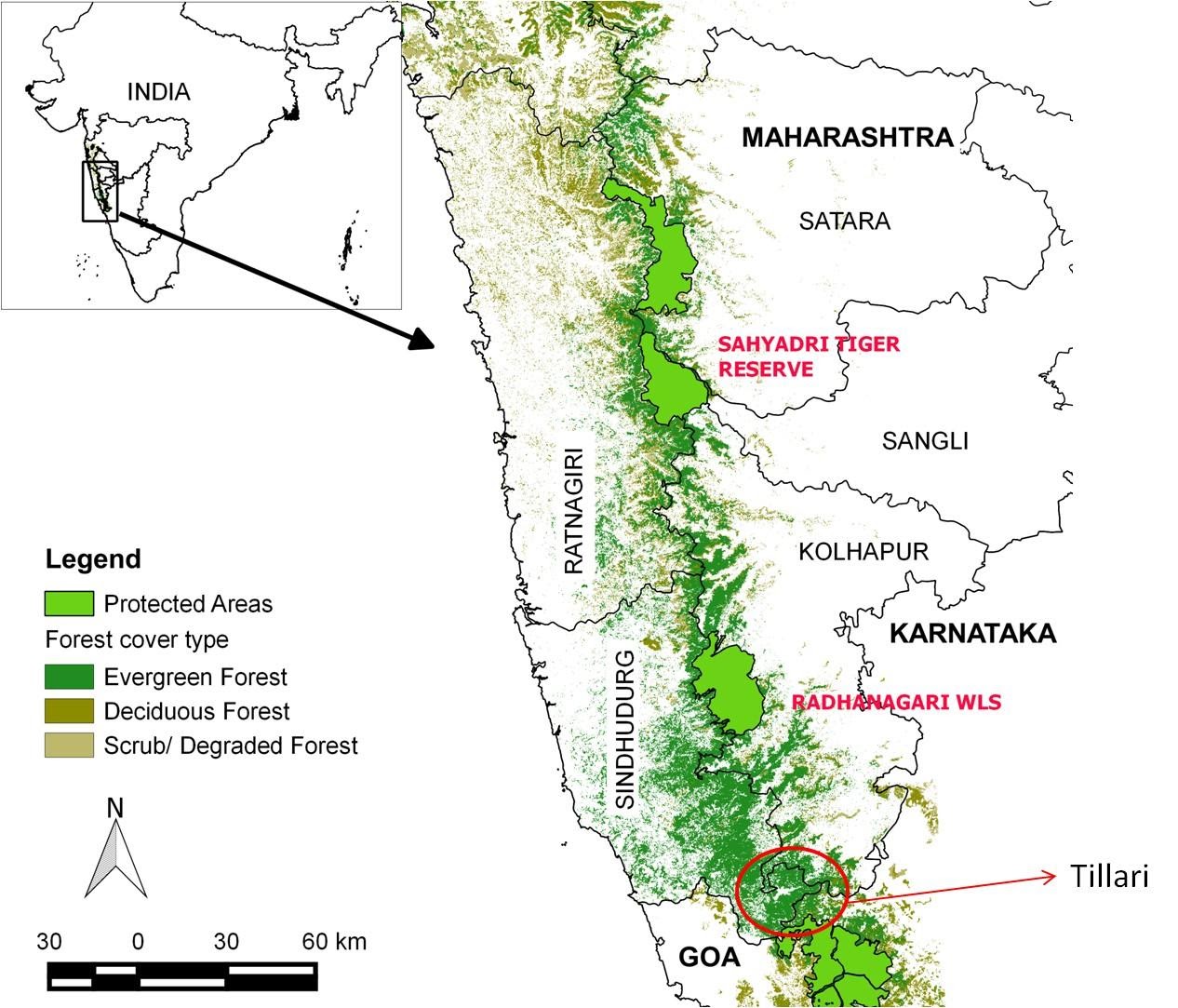Special Liquidity Scheme for NBFCs/HFCs
Why in News
Recently, the Central government has approved the proposal to launch a Special Liquidity Scheme for Non-Banking Financial Companies (NBFCs) and Housing Finance Companies (HFCs) to improve their liquidity position.
- In the Budget Speech of 2020-21, it was announced that a mechanism would be devised to provide additional liquidity facility to NBFCs/HFCs over that provided through the Partial Credit Guarantee Scheme (PCGS).
- HFCs are specialized NBFCs. Recently, the Reserve Bank of India (RBI) came up with the new definition of HFCs.
- To qualify as HFCs, a NBFC must have 50% assets as housing loans and 75% of which should be for individual homebuyers.
- HFCs are regulated by RBI.
Key Points
- Details of the Scheme:
- Under the scheme a Special Purpose Vehicle (SPV) would be set up to manage a Stressed Asset Fund (SAF) of the NBFCs/ HFCs.
- The SPV will issue securities, which would be guaranteed by the Government of India and purchased by the Reserve Bank of India (RBI) only.
- The proceeds of sale of such securities would be used by the SPV to acquire short-term debt of NBFCs/HFCs.
- The Scheme will be administered by the Department of Financial Services (Ministry of Finance).
- Eligibility for NBFCs/ HFCs:
- They should not have net Non Performing Assets (NPAs) of more than 6% as on 31st March 2019.
- They should have made net profit in at least one of the last two preceding financial years of 2017-18 and 2018-19.
- They should not have been reported under SMA-1 or SMA-2 category by any bank for their borrowings during the last one year prior to 1st August 2018.
- Banks classify borrowers into Special Mention Accounts (SMA) based on their delay in repayment.
- SMA-0 loans are overdue between 1 and 30 days.
- SMA-1 loans are overdue between 31 and 60 days.
- SMA-2 loans are overdue between 61 to 90 days.
- The asset turns NPA after 90 days of being overdue.
- Banks classify borrowers into Special Mention Accounts (SMA) based on their delay in repayment.
- Benefits:
- Unlike the Partial Credit Guarantee Scheme, NBFCs/ HFCs do not have to liquidate their current asset portfolio under this scheme.
- Current assets are all the assets of a company that are expected to be used as a result of standard business operations over the next year.
- The scheme would also act as an enabler for the NBFC to get investment grade for bonds issued.
- The Scheme would benefit the real economy by augmenting the lending resources of NBFCs/HFCs/MFls.
- This facility would supplement the liquidity measures taken so far by the Government and RBI.
- Unlike the Partial Credit Guarantee Scheme, NBFCs/ HFCs do not have to liquidate their current asset portfolio under this scheme.
- Financial implication:
- The direct financial implication for the Central government is Rs. 5 crore, which may be the equity contribution to the SPV.
- Beyond that, there is no financial implication for the government until the guarantee involved is invoked.
- However, on invocation, the extent of government liability would be equal to the amount of default subject to the guarantee ceiling, which has been set at Rs. 30,000 crore.
Non-Banking Financial Company
- NBFC is a company registered under the Companies Act, 1956.
- It is engaged in the business of loans and advances, acquisition of shares/stocks/bonds/debentures/securities issued by Government or local authority or other marketable securities of a like nature, leasing, hire-purchase, insurance business, chit business.
- But, it does not include any institution whose principal business is that of agriculture activity, industrial activity, purchase or sale of any goods (other than securities) or providing any services and sale/purchase/construction of immovable property.
- A non-banking institution which is a company and has principal business of receiving deposits under any scheme or arrangement in one lump sum or in installments by way of contributions or in any other manner, is also a non-banking financial company (Residuary non-banking company).
- Features of NBFCs
- NBFC cannot accept demand deposits.
- NBFCs do not form part of the payment and settlement system and cannot issue cheques drawn on itself.
- Deposit insurance facility of Deposit Insurance and Credit Guarantee Corporation is not available to depositors of NBFCs.
Accelerate Vigyan Scheme: SERB
Why in News
Recently, the Science and Engineering Research Board (SERB), has launched a scheme called Accelerate Vigyan (AV) to strengthen scientific research mechanisms in the country.
Key Points
- Objective: To give more thrust on encouraging high-end scientific research and preparing scientific manpower, which can lead to careers in research and knowledge-based economy.
- Vision: To expand the research base, with three broad goals i.e. consolidation/aggregation of all scientific programs, initiating high-end orientation workshops, and creating opportunities for research internships.
- Components:
- ABHYAAS Programme: Under it, AV is inviting applications for the winter season (December 2020-January 2021).
- It is an attempt to boost research and development in the country by enabling and grooming potential PG/PhD students by means of developing their research skills in selected areas across different disciplines or fields.
- It has two components: High-End Workshops i.e. KARYASHALA and Research Internships i.e. VRITIKA.
- This is especially important for those researchers who have limited opportunities, access to facilities and infrastructure.
- SAMMOHAN: It has been sub-divided into SAYONJIKA and SANGOSHTI.
- SAYONJIKA is an open-ended program to catalogue the capacity building activities in science and technology supported by all government funding agencies in the country.
- SANGOSHTI is a pre-existing program of SERB for the organisation of workshops.
- ABHYAAS Programme: Under it, AV is inviting applications for the winter season (December 2020-January 2021).
- Execution: An Inter-Ministerial Overseeing Committee (IMOC) involving all the scientific ministries/departments has been constituted for the purpose of supporting SERB in implementing the AV scheme.
- Significance:
- Capacity Building: The database of skilled manpower developed across different disciplines through all the sub-components of the AV would help in capacity building.
- Social Responsibility: The scheme also seeks to garner the social responsibility of the scientific community in the country.
Science and Engineering Research Board
- It is a statutory body under the Department of Science and Technology, Ministry of Science and Technology established by an Act of the Parliament of India in 2009.
- It is chaired by the Secretary to the Government of India in the Department of Science and Technology and has other senior government officials and eminent scientists as members.
- It was set up for promoting basic research in science and engineering and to provide financial assistance to scientists, academic institutions, Research and Development laboratories, industrial concerns and other agencies for such research.
Way Forward
- The AV will work on mission mode, particularly with respect to its component dealing with consolidation/aggregation of all major scientific events in the country.
- It will also initiate mechanisms of mentoring, training and hands-on workshops on a national scale.
- In a nutshell, the AV platform is expected to be a game changer for developing career paths and providing support to skilled manpower in the country.
Introduction of Locally Produced Millets in ICDS, PDS
Why in News
Recently, Odisha has decided to introduce locally produced millets for the first time into Integrated Child Development Services (ICDS) Scheme and Public Distribution System (PDS).
- The initiatives will be carried out as a part of the Odisha’s Millet Mission (2017).
- The State’s millet mission aims to popularise local production of millets among farmers and increase local household consumption for better dietary diversity and nutritional gains.
- It is an attempt to develop decentralised infrastructure for processing and re-popularising millets.
Millets
- Millet is a collective term referring to a number of small-seeded annual grasses that are cultivated as grain crops, primarily on marginal lands in dry areas in temperate, subtropical and tropical regions.
- Some of the common millets available in India are Ragi (Finger millet), Jowar (Sorghum), Sama (Little millet), Bajra (Pearl millet), and Variga (Proso millet).
Key Points
- Aim:
- The initiative intends to integrate locally grown millets as part of public food systems such as ICDS and PDS, mid-day meals.
- It also aims to build climate resilience among farmers and promote agroecological farming methods for cultivation that draw on chemical-free agriculture practices and locally sustained food systems.
- Ideally, the aim is to make the districts self-sufficient with produce, procurement and distribution.
- Need:
- Odisha has an immense malnutrition burden to address, with about 45% children who are stunted.
- The State also has almost 41% women who have a below-normal body mass index, according to the National Family Health Survey, 2015-16.
- Features:
- The districts will be using their District Mineral Foundation (DMF) funds to implement the initiative.
-
District Mineral Foundation (DMF) is a non-profit body, in those districts affected by the mining works, to work for the interest and benefit of persons and areas affected by mining related operations.
-
Its manner of operation comes under the jurisdiction of the respective State Government.
-
- The money will be credited in the farmers’ account at the end of the sowing and harvest season based on the report submitted by local implementation agencies and vetted by the district administration.
- Additionally, all the districts will provide 1.5 kilogrammes ragi per person (out of the five kg per person entitlement) through PDS.
- The districts will be using their District Mineral Foundation (DMF) funds to implement the initiative.
- Complementary to Agricultural Practices:
- The millet drive is largely focused on local food diversity and ensuring availability of food to farmers unlike the consumer and urban market-driven approach.
- Farmers who have adopted bio-inputs and follow the system of millets intensification will be given incentives for three years.
- The state government will also be incentivising agronomic practices including pest and weed management through organic methods. However, it does not exclude farmers who will be using chemical-based fertilisers.
Way Forward
- The focus on non-chemical approaches coupled with a focus on nutrition and food security so far distinguishes the Odisha approach from that of the Union government.
- Often, such interventions are driven towards creating attractive markets and ignore household nutrition and food security. The fact that this endeavour approaches millets from the point of nutrition and safe food is important.
Two New Species of Butterfly
Why in News
Recently, the lepidopterists have discovered the two new species of butterfly i.e. Striped Hairstreak and Elusive Prince in Changlang district of Arunachal Pradesh.
- At present, India has 1,327 species of butterfly as compared to 1,318 species in 2015.
- A lepidopterist is a person who specialises in studying butterflies and moths.
Key Points
- Striped Hairstreak:

- Scientific Name: Yamamotozephyrus kwangtugenesis
- Discovery: It is found in Vijaynagar village of Changlang district of Arunachal Pradesh, bordering Myanmar.
- It was a subject of interest for the lepidopterists as its genus is diversified into several genera (i.e. sub-divisions) and thus, difficult to trace.
- Habitat:
- It was first recorded in Hainan province of China.
- It is also found in North America, from the Rocky Mountains
- Elusive Prince:

- Scientific Name: Rohana tonkiniana
- Discovery: It is found in Miao subdivision situated on the periphery of the Namdapha National Park.
- In India only a male specimen of the Elusive Prince was found.
- Initially it was considered as a variant of the Black Prince, but the study revealed that it is different and not recorded in India before.
- Habitat: It was first recorded in Tonkin in north Vietnam.
- The Rohana Genus: It has been represented in India by two species — the Black Prince (Rohana parisatis) and the Brown Prince (Rohana parvata).
- Significance for Arunachal Pradesh:
- These discoveries from Arunachal Pradesh indicate the rich biodiversity of the State.
- The government thus needs to focus on helping volunteers or citizen scientists by providing the support needed. This will help in boosting eco-tourism apart from regular scientific research.
Butterfly
- Butterflies are insects from the order Lepidoptera of phylum Arthropoda which also includes moths.
- Adult butterflies have large, often brightly coloured wings, and conspicuous, fluttering flight.
- Significance:
- Rich Biodiversity: Abundance of butterflies in any area represents the rich biodiversity.
- Indicator Species: The butterfly acts as an indicator species.
- An indicator species provides information on the overall condition of the ecosystem and of other species in that ecosystem. They reflect the quality and changes in environmental conditions as well as aspects of community composition.
- Pollinator: It acts as a pollinator by helping in pollination and conserving several species of plants.
Namdapha National Park
- It lies at the international border between India and Myanmar within Changlang District in the state of Arunachal Pradesh.
- It is only park in the World to have the four Feline species of big cat namely the Tiger (Panthera Tigris), Leopard (Panthera Pardus), Snow Leopard (Panthera Uncia) and Clouded Leopard (Neofelis Nebulosa).
- Hoolock Gibbons, the only ‘ape’ species found in India is found in this National Park.
Assam Keelback Rediscovered
Why in News
The Assam keelback (Herpetoreas pealii), a snake endemic to Assam, has been found 129 years after it was last spotted by British tea planter Samuel Edward Peal in 1891.
Key Points
- The snake was considered a lost species since no sighting had been reported since its discovery in 1891.
- In 2018, it was found in the Poba Reserve Forest (RF) by a team of scientists from the Wildlife Institute of India (WWI), who were retracing the steps of the Abor Expedition.
- Abor Expedition was a military expedition by the British against the Abors in 1911.
- Assam Keelback:

- The non-venomous snake was named after Samuel Peal and the place where it was found.
- It is small — about 60 cm long, brownish, with a patterned belly.
- It has a unique genus (Herpetoreas) belonging to a smaller group of four species, found in Eastern and Western Himalayas, South China and Northeast India.
- It is categorised as ‘data deficient’ in the International Union for Conservation of Nature (IUCN) list.
- This is the worst category because there is practically no information available about it and it is difficult to determine its status.
- Poba Reserve Forest:
- Poba RF is located along the Assam-Arunachal border, in Assam.
- The National Highway -15 passes through the reserved forest.
- The reserved forest is now under threat due to destruction of forest cover and random hunting, poaching and illegal collection of forest resources by unscrupulous people.
Globba andersonii: Rediscovered Plant Species
Why in News
A team of researchers have “rediscovered” a rare plant species called Globba andersonii from the Sikkim Himalayas.
- The species has been found near the Teesta river valley region after a gap of nearly 136 years.
- The earliest records of the collection of this plant were dated between the period 1862-70 by Scottish botanist Thomas Anderson from Sikkim and Darjeeling. Then, in 1875, the British botanist Sir George King, had collected it from the Sikkim Himalayas.
Key Points
- Features:
- The plant, known commonly as ‘dancing ladies’ or ‘swan flowers’ was thought to have been extinct until its “re-collection”, for the first time since 1875.
- Globba andersonii are characterised by white flowers and non-attached anthers (the part of a stamen that contains the pollen).
- The species has been listed as “Endangered” on the IUCN Red List of Threatened Species.
- Habitat:
- It is also termed as “narrowly endemic” as the species is restricted mainly to the Teesta River Valley region which includes the Sikkim Himalayas and Darjeeling hill ranges.
- The plant usually grows in a dense colony as a lithophyte (plant growing on a bare rock or stone) on rocky slopes in the outskirts of evergreen forests.
- It is especially prevalent near small waterfalls along the roadside leading to these hill forests, which are 400-800 m. above sea level.
Tillari Conservation Reserve Notified
Why in News
The Maharashtra Government has declared 29.53 sq km area of Dodamarg forest range in Sindhudurg district as ‘Tillari Conservation Reserve’.
Key Points
- Tillari Conservation Reserve:
- Tillari is the seventh wildlife corridor in the state to be declared as a ‘conservation reserve’.
- The area covering nine villages in the forest range is known to serve as a corridor and even as a habitat for the population of tigers and elephants moving between the three states of Goa, Karnataka and Maharashtra.
- It connects Mhadei sanctuary in Goa and Bhimgad in Karnataka.
- It has semi-evergreen forest, tropical moist deciduous forests, and a number of unique trees, butterflies, and flowers.
- Conservation Reserves in Maharashtra:
- Maharashtra has 62 conservation reserves, of which 13 are in the western ghats.
- Tillari is a reserve in western ghats.
- Conservation Reserves in India:
- Conservation reserves and community reserves are terms denoting protected areas of the country which typically act as buffer zones to or connectors and migration corridors between established national parks, wildlife sanctuaries and reserved and protected forests.
- Such areas are designated as conservation areas if they are uninhabited and completely owned by the Government of India but used for subsistence by communities and community areas if part of the lands are privately owned.
- These protected area categories were first introduced in the Wildlife (Protection) Amendment Act of 2002 − the amendment to the Wildlife Protection Act of 1972.
- These categories were added because of reduced protection in and around existing or proposed protected areas due to private ownership of land and land use.
- As of July 2019, there were 88 conservation reserves and 127 community reserves in India.
Reconstitution of Central Zoo Authority
Why in News
Recently, the Ministry of Environment, Forest and Climate Change has reconstituted the Central Zoo Authority (CZA) to include an expert from the School of Planning and Architecture, Delhi, and a molecular biologist.
Key Points
- The CZA is a statutory body under the Ministry of Environment, Forest and Climate Change. It was constituted in 1992 under the Wildlife (Protection) Act, 1972.
- Members: It is chaired by the Environment Minister and has 10 members and a member-secretary.
- Objective: The main objective of the authority is to complement and strengthen the national effort in conservation of rich biodiversity.
- Functioning: The authority provides recognition to zoos and is also tasked with regulating the zoos across the country.
- It lays down guidelines and prescribes rules under which animals may be transferred among zoos nationally and internationally.
- It coordinates and implements programmes on capacity building of zoo personnel, planned breeding programmes and ex-situ research.
Indira Gandhi National Centre for the Arts
Why in News
The Indira Gandhi National Centre for the Arts (IGNCA) is planning to highlight the work of artists who have been entertaining and boosting the public’s morale during the Covid-19 pandemic (referred as silent Covid warriors).
Key Points
- The Indira Gandhi National Centre for the Arts (IGNCA) was established in 1987 as an autonomous institution under the Ministry of Culture, as a centre for research, academic pursuit and dissemination in the field of the arts.
- The IGNCA has a trust (i.e. Board of Trustees), which meets regularly to give general direction about the Centre’s work. The Executive Committee, drawn from among the Trustees, functions under a Chairman.
- It is a research unit under Project Mausam.
- Project ‘Mausam’ is a Ministry of Culture project with Archaeological Survey of India (ASI), New Delhi as the nodal agency.
- The central themes that hold Project ‘Mausam’ together are those of cultural routes and maritime landscapes that not only linked different parts of the Indian Ocean littoral, but also connected the coastal centres to their hinterlands.
- A project on design and development of a Vedic Heritage Portal was initiated at IGNCA, under the aegis of the Ministry of Culture, Government of India. The portal aims to communicate messages enshrined in the Vedas.
National Doctor’s Day
Why in News
National Doctor's Day is celebrated on 1st July every year to recognise the invaluable work done by doctors and physicians and thank them for their dedicated service.
- The day also marks the birth and death anniversary of Dr. Bidhan Chandra Roy who was one of the most renowned physicians in the country.
Key Points
- Background: The Indian Medical Association (IMA) observed the first National Doctor’s day in July 1991.
- IMA is a representative, national voluntary organisation of Doctors of Modern Scientific System of Medicine, which looks after the interest of doctors as well as the well being of the community at large. It was formed in 1928, headquartered in New Delhi.
- IMA in 1946 helped in organisation of the World Medical Association, and thus became its founder member. WMA has its headquarters in France.
- 2020 Theme: ‘Lessen the mortality of Covid-19’ which includes awareness about asymptomatic hypoxia and early aggressive therapy.
Dr Bidhan Chandra Roy (1882-1962)
- Dr B.C. Roy served as a physician, a freedom fighter, an educationist and a politician.
- He was born in Patna Bengal Presidency, British India, in 1882
- He was a follower of Brahmo Samaj. He also led the Civil disobedience movement (began in 1930) in Bengal.
- He served as a physician to Mahatma Gandhi and was also elected as the second Chief Minister of West Bengal.
- He laid the foundation of five eminent cities, namely, Durgapur, Kalyani, Bidhannagar, Ashokenagar and Habra.
- The British Medical Journal, in its obituary of Roy, called him the “first medical consultant in the subcontinent of India, who towered over his contemporaries in several fields”.
- The Government honoured him with the country’s highest civilian award, Bharat Ratna, in 1961.
- Further, the B.C. Roy National Award was instituted in 1976 for work in the area of medicine, politics, science, philosophy, literature and arts.
Diana Award
Why in News
A 13-year-old schoolgirl from Delhi has been selected among the recipients of the 2020 Diana Award, an honour given on the birth anniversary of Princess Diana (of Wales) to youngsters for humanitarian efforts.
Key Points
- She received the award for developing Recycler App, a web-based mobile application to connect users with waste-handlers. The door-to-door pick up service helps in easy disposal of recyclable waste for those who may not have the means or time to travel to drop their waste.
- The app also claims to be helpful for waste-handlers, whose earnings are usually low and are vulnerable to health issues because of improper handling of waste.
- Her work on sustainable recycling is a valuable contribution towards achieving the United Nation-mandated Sustainable Development Goals of poverty alleviation, innovation, infrastructure, responsible consumption and climate action.
- Diana Awards were established in 1999 and it is considered one of the highest accolades a young person can receive for social action or humanitarian efforts.

